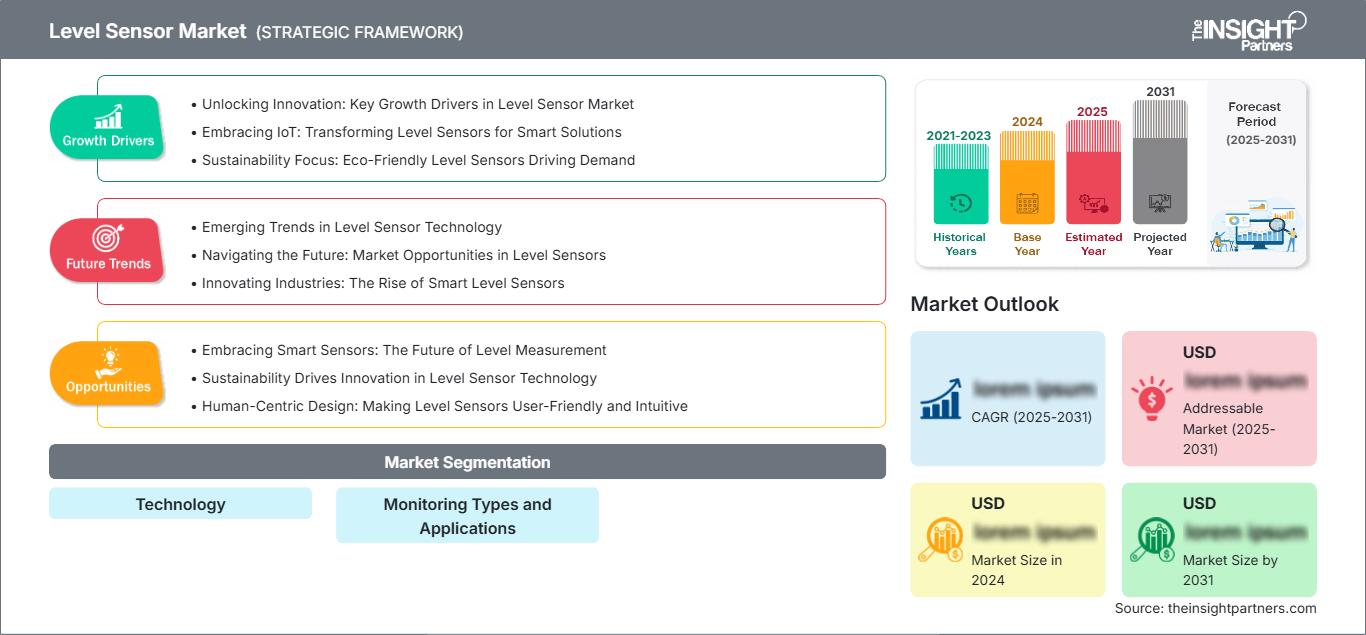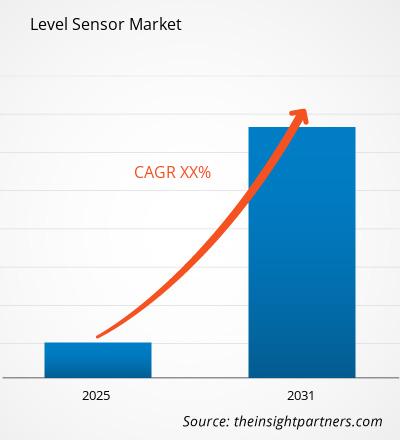液位传感器用于检测液体、流体和流化固体的液位。液位传感器涵盖各种传感技术和应用类型。从更广义的层面来看,液位传感器市场分为两类:静态液位传感器市场(流化固体材料)和流动液位传感器市场(液体物体)。随着数字电子技术的进步,液位传感器产品在用户友好性、可靠性、易用性和成本降低等方面的功能不断增强,这些特性被分析为推动液位传感器市场增长的因素。此外,工业和电力行业的政府法规预计将进一步推动全球液位传感器市场的发展。制造业和汽车生产行业多用途液位传感器的应用进一步促进了液位传感器市场的增长。液位传感器的小型化是液位传感器市场显著增长的另一个因素。随着亚太地区制造业的快速发展和众多制造业的涌现,预计亚太地区的液位传感器市场将在预测期内蓬勃发展。尽管目前市场主要以接触式液位传感器为主,但预计在预测期内,非接触式液位传感领域将出现强劲增长。各大机构正在研发更先进的非接触式液位传感器,例如微波、称重传感器、超声波、激光、光学和核液位传感器,这些传感器比接触式液位传感器更具优势。随着对纳米技术研发的重视,以及液位传感应用和产品的改进以适应技术的进步,全球液位传感器市场预计将大幅增长。西门子股份公司、ABB有限公司、艾默生电气公司、霍尼韦尔传感与控制公司等跨国公司正在大力投资收购和研发活动,以促进非接触式液位传感技术的创新发展。然而,薄膜技术在传感产品生产中的广泛应用阻碍了液位传感器市场的发展。采用不同的技术来制造类似的液位传感产品是供应商面临的另一个主要问题。全球液位传感器市场根据技术可分为接触式液位传感器和非接触式液位传感器。此外,市场还根据监测类型细分为固体液位传感器监测、液体液位传感器监测以及固体和液体液位传感器监测。液体。此外,全球液位传感器市场已根据应用进行分类,即:消费领域、ICT 和计算领域、工业领域、汽车和运输领域、能源和公用事业领域、医疗保健领域、农业领域以及军事和国防部门。全球液位传感器市场根据地理位置分为五个区域:北美、欧洲、亚太地区 (APAC)、中东和非洲 (MEA) 和南美 (SAM)。凭借许多先进的制造单位,北美引领全球液位传感器市场。中国、印度和巴西等发展中国家政府在废水处理方面的进步举措预计将推动液位传感器市场的发展。由于技术进步和对高性能传感器的需求不断增长,亚太地区 (APAC) 被认为是全球液位传感器市场的关键区域。全球液位传感器市场的一些主要参与者包括 Pepperl+Fuchs AG、Vega GmbH、Gems Sensors 和Control Co.、Magnetrol International, Inc.、Honeywell International, Inc.、Endress+Hauser AG、ABB Ltd. 和 Siemens AG 等。
您将免费获得任何报告的定制,包括本报告的部分内容,或国家级分析、Excel 数据包,以及为初创企业和大学提供超值优惠和折扣
液位传感器市场: 战略洞察

-
获取本报告的主要市场趋势。这个免费样本将包括数据分析,从市场趋势到估计和预测。
液位传感器市场区域洞察
The Insight Partners 的分析师已详尽阐述了预测期内影响液位传感器市场的区域趋势和因素。本节还讨论了北美、欧洲、亚太地区、中东和非洲以及南美和中美洲的液位传感器市场细分和地域分布。
液位传感器市场报告范围
| 报告属性 | 细节 |
|---|---|
| 市场规模 2024 | US$ XX million |
| 市场规模 2031 | US$ XX Million |
| 全球复合年增长率 (2025 - 2031) | XX% |
| 历史数据 | 2021-2023 |
| 预测期 | 2025-2031 |
| 涵盖的领域 | By 技术By 监控类型和应用 |
| 覆盖地区和国家 |
北美
|
| 市场领导者和主要公司简介 |
|
液位传感器市场参与者密度:了解其对业务动态的影响
液位传感器市场正在快速增长,这得益于终端用户需求的不断增长,而这些需求的驱动因素包括消费者偏好的不断变化、技术进步以及对产品优势的认知度不断提高。随着需求的增长,企业正在扩展产品线,不断创新以满足消费者需求,并抓住新兴趋势,从而进一步推动市场增长。

- 获取 液位传感器市场 主要参与者概述
- 历史分析(2 年)、基准年、预测(7 年)及复合年增长率
- PEST和SWOT分析
- 市场规模、价值/数量 - 全球、区域、国家
- 行业和竞争格局
- Excel 数据集
近期报告
相关报告
客户评价
购买理由
- 明智的决策
- 了解市场动态
- 竞争分析
- 客户洞察
- 市场预测
- 风险规避
- 战略规划
- 投资论证
- 识别新兴市场
- 优化营销策略
- 提升运营效率
- 顺应监管趋势






















 获取免费样品 - 液位传感器市场
获取免费样品 - 液位传感器市场